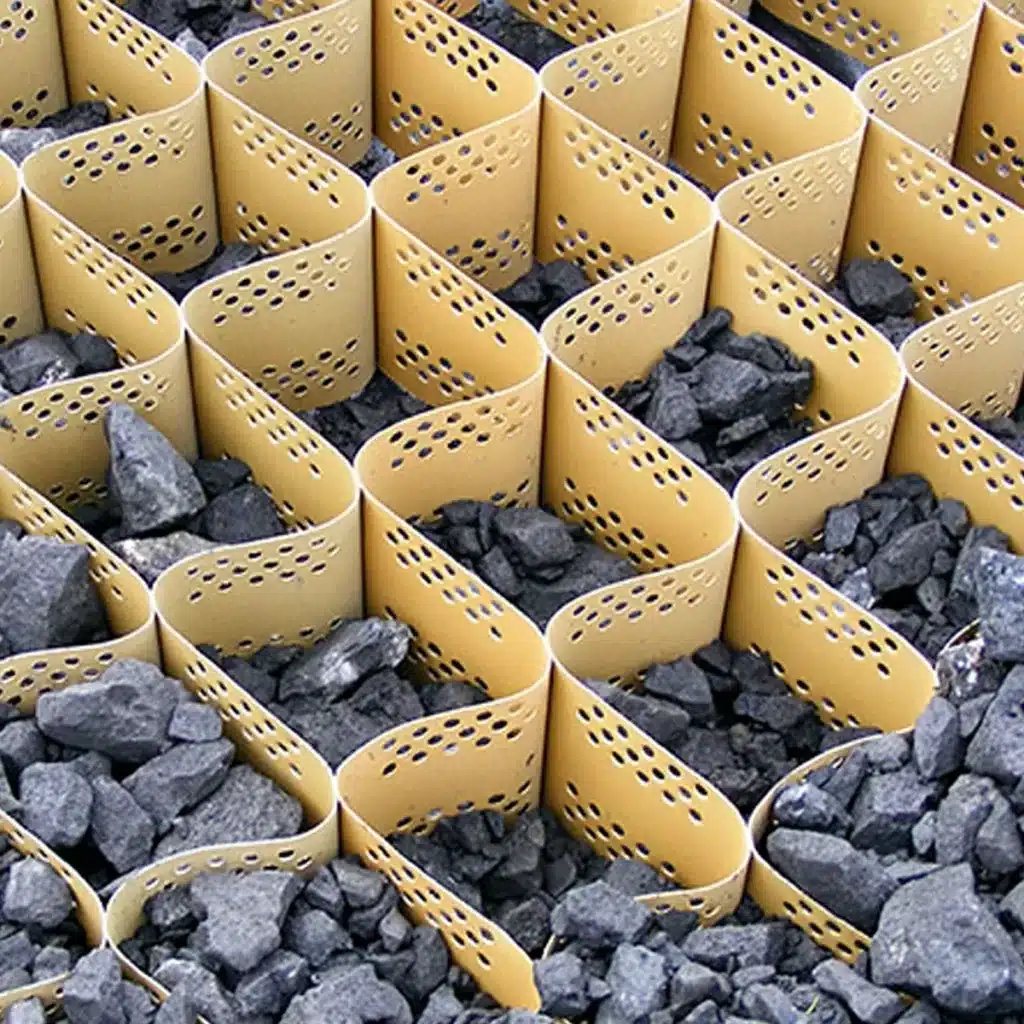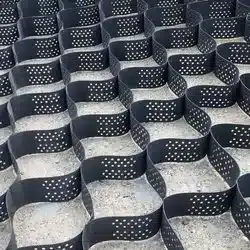+86-159 9860 6917
info@geofantex.com
geofantex@gmail.com
+86-400-8266163-44899
In recent years, the quest for more sustainable and reliable construction methods has led to the adoption of innovative technologies. One such breakthrough is the geocell shed base, a solution that promises to revolutionize the way we think about laying foundations for outdoor structures such as sheds, greenhouses, and patios. This article delves into the essence of geocell shed bases, exploring their benefits, installation process, and how they compare to traditional methods, providing a comprehensive guide for homeowners and builders alike.

What is a Geocell Shed Base?
A Geocell Shed Base is a foundation system used to provide stable support for sheds or small structures, utilizing geocells. Geocells are three-dimensional, honeycomb-like structures made from polymer materials. When installed on the ground, these geocell are filled with materials like gravel, sand, or crushed stone, which helps to distribute loads evenly and improve soil stability.
Here’s how it works:
- Stabilization: The geocell confines and stabilizes the base material, preventing it from shifting or washing away, especially on soft or unstable soils.
- Drainage: The geocell allows for better water drainage, reducing the risk of water accumulation beneath the shed and preventing erosion.
- Durability: By reinforcing the ground beneath, geocell provide long-lasting support for sheds, preventing settling or shifting over time.
This system is ideal for creating a solid, cost-effective foundation in areas where traditional concrete or paving might be too expensive or difficult to install. It’s commonly used for garden sheds, storage units, or temporary structures.
How Does a Geocell Shed Base Benefit Your Outdoor Structure?
A geocell shed base offers several benefits for outdoor structures, enhancing their durability and functionality. Here’s how:
- Stability and Support: Geocell bases provide a stable and strong foundation for sheds. The interconnected cells of a geocell grid effectively confine and compact the fill material, distributing weight evenly. This helps prevent the shed from sinking or settling unevenly, which can occur with softer ground or less stable foundations.
- Drainage and Erosion Control: Geocells are excellent for managing drainage. They allow water to flow through while containing the fill material, preventing erosion around the shed’s base. This is particularly useful in areas that experience heavy rainfall or have poor natural drainage.
- Ease of Installation: Installing a geocell shed base can be faster and requires less preparation than traditional concrete foundations. You typically need to level the site and fill the geocells with a suitable material like gravel. This can be a more accessible DIY project compared to mixing and pouring concrete.
- Environmental Friendliness: Geocell bases are often made from recycled materials and require less excavation and site disruption than other types of foundations. This minimizes the environmental impact of building a shed.
- Cost-Effectiveness: Compared to concrete, a geocell base can be more cost-effective, especially for larger sheds or where concrete delivery is expensive. The cost of materials and labor for a geocell base generally tends to be lower.
- Flexibility in Use: Geocells are versatile and can adapt to various terrains and soil conditions. This flexibility allows for the construction of outdoor structures in locations that might be unsuitable for heavier, more rigid foundation types.
Overall, a geocell shed base is a robust, economical, and eco-friendly option that can enhance the longevity and functionality of outdoor structures.

Is Installing a Geocell Shed Base a DIY-Friendly Project?
Yes, installing a geocell shed base is generally a DIY-friendly project. With some basic tools and careful preparation, most homeowners can handle it without professional help. Here’s why:
- Lightweight and easy to handle: Geocell panels are made of HDPE, making them easy to transport, expand, and position.
- Straightforward process: The installation involves clearing and leveling the ground, laying a compacted sub-base, expanding and anchoring the geocell, filling the cells with gravel or crushed stone, and compacting the surface.
- No special equipment needed: Tools like a shovel, rake, and hand compactor are usually enough for a standard shed base.
- Flexible and adjustable: Geocell panels can be cut or joined to match the size and shape of your shed foundation.
However, for large areas or uneven terrain, you might need extra help or some additional preparation. Overall, it’s a manageable project for a weekend DIYer.
How Does a Geocell Shed Base Compare to Traditional Methods?
When comparing a geocell shed base to traditional methods, there are several key differences to consider:
- Cost: Geocell systems can be more expensive upfront due to the cost of materials and installation. Traditional methods may involve simpler materials, potentially leading to lower initial costs.
- Durability: Geocell shed bases are known for their high durability, providing excellent support and stability for sheds. Traditional methods may vary in durability depending on the materials used, with concrete or asphalt being more durable but potentially more prone to cracking over time.
- Ease of Installation: Geocell systems typically offer easier installation compared to traditional methods like pouring concrete or laying asphalt. Geocell can be quickly assembled and filled with gravel or other fill material, reducing labor time and costs.
- Long-term Performance: Geocell shed bases often exhibit excellent long-term performance, as they distribute weight evenly and prevent settling. Traditional methods may experience issues like cracking, settling, or erosion over time, particularly in areas with poor soil conditions.
In summary, while geocell shed bases may involve higher initial costs, they offer advantages in terms of durability, ease of installation, and long-term performance compared to traditional methods. However, the choice between the two methods ultimately depends on factors such as budget, site conditions, and desired longevity.
The geocell shed base stands out as a modern solution for constructing durable, eco-friendly foundations for outdoor structures. Its benefits, including enhanced drainage, durability, and ease of installation, make it a superior choice compared to traditional methods. Whether you’re a DIY enthusiast or a professional builder, incorporating geocell technology into your projects can lead to more sustainable, cost-effective, and long-lasting outdoor structures. As we continue to seek environmentally friendly construction options, the geocell shed base represents a significant step forward in achieving these goals.



Get Free Sample
We’ll respond as soon as possible(within 12 hours)





















